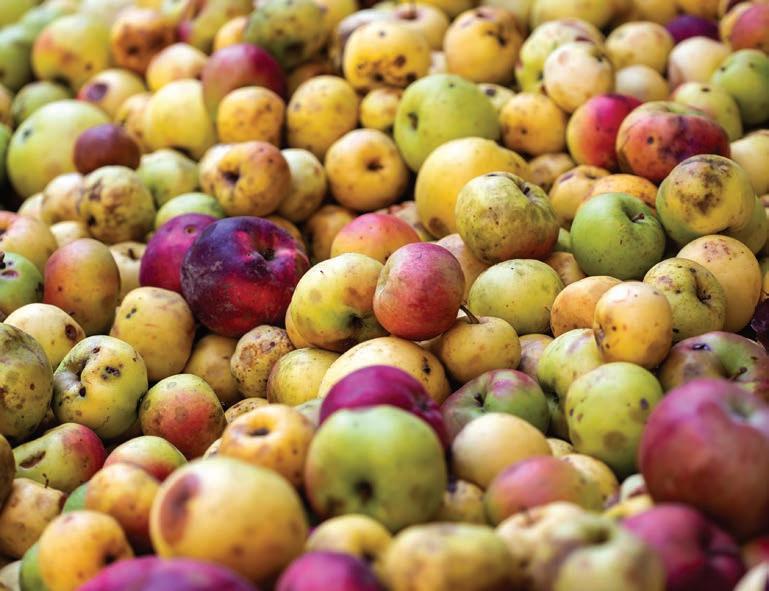
3 minute read
SOLUTIONS TO REDUCE FOOD WASTE

ALL IT TAKES IS THE RIGHT ACTION
Food travels a complex supply chain. The required reduction in waste to address global hunger and global warming requires all stakeholders to become engaged, writes GARETH GRIFFITHS
In the book, Drawdown, The Most reaches the retail outlet, according to World Comprehensive Plan Proposed Ever to Wide Fund for Nature (WWF) and in the Reverse Global Warming, edited by fi shing sector, up to 27 per cent of a catch well-known author Paul Hawken, it says is lost between landing and consumption. that food going to waste, together with the This contrasts with the observation that growing deforestation to produce additional 43.6 per cent of South African children are farmland, is the third-largest contributor defi cient in Vitamin A, an imbalance that to global greenhouse gas could be corrected by the emissions and offers massive consumption of vegetables potential for regeneration. and fi sh. Ten per cent of
Taking the right action to South African children control food waste can result in suffer from iron defi ciency a reduction of 70.53 gigatonnes anaemia, which again of carbon emissions in the could be addressed by an atmosphere. The conundrum is appropriate diet. that, while approximately Signifi cantly, food waste is one-third of the global becoming a more important workforce is engaged in the Innocentia Modau item on the government’s production of food to feed the agenda – the South African planet, one-third of this food government is a signatory to is wasted; yet 800 million people worldwide the United Nations’ Sustainable Development live in perpetual hunger. The equation does Goals, of which Target 12.3 sets a target to not balance and the result creates two reduce food waste by 50 per cent by 2030. interconnected problems. Food is not getting to Innocentia Modau, research and project the people who really need it, and the planet is co-ordinator: Food Waste and Sustainable Diets heating up as a result of the surplus of food that at the World Wide Fund for Nature says the is being discarded in some places. organisation believes that a regenerative food
Astonishingly, in the South Africa context, system depends on resilient levels of production. it has been estimated that 44 per cent of all “Until recently, we focused on the impacts fruit and vegetable food is lost before it even of agricultural production – by far the most
signifi cant environmental impacts. However, focusing on farms only will not bring about the changes that are needed for a resilient and secure food system. We need a socioecological approach where we embed social, economic and political dimensions within the natural ecology. We also need to study this complex situation to ensure we do not create any unintended consequences in our approach. “The World Wide Fund for Nature focuses on fi ve practical areas for food system transformation: inclusive regenerative farming, optimal water use, responsible sourcing, reducing food waste, and dietary shift. This transition must alleviate poverty and reduce inequalities by focusing on those most affected by the nutritional defi cit, namely women and children in low-income communities.
“Farmers, fresh produce markets, food manufacturers and food retailers routinely produce surplus foods. Much of this ends up as waste,” she explains. “If diverted at the right time, a sizeable share of this food can be redirected for human consumption.
“Redirecting surplus food will also avoid the loss of signifi cant amounts of energy, water and fi nancial capital embedded in wasted food, and the greenhouse gases resulting from its decomposition at landfi lls,” says Modau.
She says that the WWF is starting a project with FoodForward SA that aims to access surplus food generated on farms for redistribution, reducing food insecurity (hunger) while also building a long-term approach to reducing food waste (the environment). This will be done through increased farmer participation in the Second Harvest programme.
Since lockdown there is a greater openness to discuss the use of surplus food as a means to address food security. Many corporates are now directing a higher percentage of their CSI/ CSR spend to food security issues.
South African stats whEre in the value chain does waste occur?
50%
Agricultural/postharvest stage (33% cost)
25%
Processing and packaging
20%
Distribution and retail
5%
Consumer level
but reducing food waste at the later stages of the supply chain can save three times the energy of cutting waste POSTHARVEST






